The Oregon Museum of Science and Industry is a science and technology museum in Portland, Oregon, United States. It contains three auditoriums, including a large-screen theatre, planetarium, and exhibition halls with a variety of hands-on permanent exhibits focused on natural sciences, industry, and technology. Transient exhibits span a wider range of disciplines.

The Ontario Science Centre is a science museum organization based in Toronto, Ontario, Canada. Its original main location, which was permanently closed to the public on June 21, 2024, was located near the Don Valley Parkway about 11 kilometres (6.8 mi) northeast of downtown on Don Mills Road in the former city of North York. It was built down the side of a wooded ravine formed by one branch of the Don River located in Flemingdon Park.
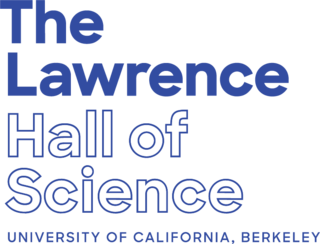
The Lawrence Hall of Science is a public science center in Berkeley, California that offers hands-on science exhibits, designs curriculum, aids professional development, and offers after school science resources to students of all ages. The Lawrence was established in 1968 in honor of physicist Ernest Orlando Lawrence (1901–1958), the University of California's first Nobel laureate. The center is located in the hills above the University of California, Berkeley campus, less than a mile uphill from the University's Botanical Garden.
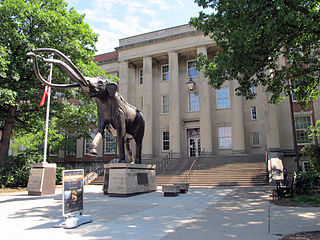
The University of Nebraska State Museum, also known as Morrill Hall, founded in 1871, is a natural history museum featuring Nebraska biodiversity, paleontology, and cultural diversity, located on the University of Nebraska–Lincoln City Campus near the corner of 14th and Vine Streets in Lincoln, Nebraska, United States. The museum houses Mueller Planetarium, a hands-on science discovery center, and the Elephant Hall, where visitors can see the world's largest articulated fossil mammoth among the collection of fossil elephants. Also featured are interactive paleontology exhibits, a dinosaur gallery, ancient life and evolution exhibits, wildlife dioramas, gems and minerals, American Indian and African exhibits, and a temporary exhibit gallery featuring rotating displays on diverse topics including photography, quilts and fine arts.

Science North is an interactive science museum in Sudbury, Ontario, Canada.
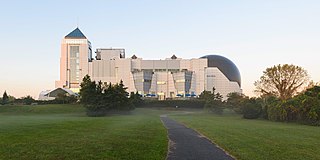
Liberty Science Center is an interactive science museum and learning center located in Liberty State Park in Jersey City, New Jersey, United States. At its opening, it was the largest such planetarium in the Western Hemisphere and the world's fourth largest.
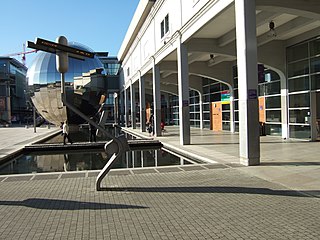
We The Curious is a science and arts centre and educational charity in Bristol, England. It features over 250 interactive exhibits over two floors, and members of the public and school groups can also engage with the Live Science Team over programming in the kitchen, studio and on live lab. We The Curious is also home of the United Kingdom's first 3D planetarium. The centre describes its aim as being "to create a culture of curiosity".

The Museum of Science (MoS) is a nature and science museum and indoor zoological establishment located in Science Park, a plot of land in Boston and Cambridge, Massachusetts, spanning the Charles River. Along with over 700 interactive exhibits, the museum features a number of live and interactive presentations throughout the building each day, along with scheduled film showings at the Charles Hayden Planetarium and the Mugar Omni Theater. The Museum is a member of the Association of Science and Technology Centers (ASTC) and the American Alliance of Museums (AAM). Additionally, the Museum of Science is an accredited member of the Association of Zoos and Aquariums (AZA), being home to over 100 animals, many of which the museum gained after they were surrendered, confiscated, rescued or rehabilitated.

The Fleet Science Center is a science museum and planetarium in Balboa Park in San Diego, California. Established in 1973, it was the first science museum to combine interactive science exhibits with a planetarium and an IMAX Dome (OMNIMAX) theater, setting the standard that most major science museums follow today. It is located at the east end of the El Prado Drive walkway, next to the Bea Evenson Fountain and plaza in central Balboa Park.

TELUS Spark Science Centre is a science museum with interactive exhibits, multimedia presentations and educational demonstrations in Calgary, Alberta, Canada. There are more than 430,000 visitors annually, including over 82,000 students.

The Houston Museum of Natural Science is a natural history museum located on the northern border of Hermann Park in Houston, Texas, United States. The museum was established in 1909 by the Houston Museum and Scientific Society, an organization whose goals were to provide a free institution for the people of Houston focusing on education and science. The museum complex consists of a central facility with four floors of natural science halls and exhibits, the Burke Baker Planetarium, the Cockrell Butterfly Center, and the Wortham Giant Screen Theatre. In 2022, the museum received 1,520,000 visitors, making it seventh on the List of most-visited museums in the United States, and was the third most-visited U.S. science museum. Much of the museum's popularity is attributed to its large number of special or guest exhibits.
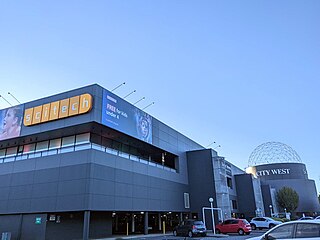
Scitech is a not-for-profit company encompassing the Scitech Discovery Centre, an interactive science centre in West Perth, Western Australia, outreach programs, professional learning programs and digital content.

Techniquest is a science discovery centre located in Cardiff Bay, Wales. It gives visitors a hands-on approach to science and includes a science theatre, a planetarium, and an exhibition space with over 100 interactive exhibits aimed at visitors of all ages.

Nehru Science Centre (NSC) is the largest interactive science centre in India. It is located in Worli, Mumbai. The centre is named after India's first Prime Minister, Jawaharlal Nehru. In 1977, the centre started with the 'Light and Sight' exhibition, and then in 1979 a Science Park was built. On 11 November 1985 it was opened to the public by Rajiv Gandhi, the then Prime Minister of India.
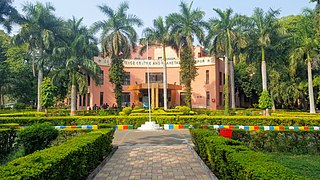
The Raman Science Centre and Raman Planetarium Complex at Nagpur is an interactive science centre affiliated with Mumbai's Nehru Science Centre. The centre was developed to promote a scientific attitude, portray the growth of science and technology and their applications in industry and human welfare, and hold science exhibits. The centre is named after famous Nobel Prize winner Indian physicist Chandrasekhara Venkata Raman.

Copernicus Science Centre is a science museum standing on the bank of the Vistula River in Warsaw, Poland. It contains over 450 interactive exhibits that enable visitors to single-handedly carry out experiments and discover the laws of science for themselves. The centre is the largest institution of its type in Poland and one of the most advanced in Europe. In 2018, since its opening, it has been visited by over 8 million people.

The Eugene Science Center, located in Alton Baker Park in Eugene, Oregon, United States, is a science and technology center for children, families, and school groups. The 10,000-square-foot (930 m2) museum near Autzen Stadium features changing interactive exhibits, planetarium shows, camp programs, special events and other science and technology-related education programs. Eugene Science Center is an independent 501(c)(3) non-profit organization governed by a volunteer board of directors. Its mission is: "To engage children, excite their curiosity, inspire them toward a lifetime love of science, and empower them to use science and technology to improve their communities." Eugene Science Center is the only science museum in Lane County and surrounding counties.

Science City, Kolkata is a science centre and science park in Kolkata, West Bengal, India. It is currently the largest science centre in the Indian subcontinent, containing a science museum, science park, and auditoriums. The centre was inaugurated in two parts, with the ‘Convention Centre Complex’ being the first on December 21, 1996, followed by the rest on July 1, 1997, by the then-prime-minister Inder Kumar Gujral. On January 10, 2010, the then-prime-minister of India, Manmohan Singh, would attempt to get the second phase of Science City completed.
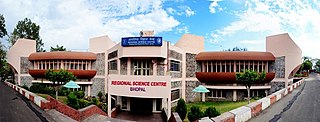
The Regional Science Centre, Bhopal (RSCB) is located in the Shyamla Hills area of Bhopal, India. It is aimed at popularizing science and technology among the people, particularly the students. It is one of the constituent units of the National Council of Science Museums or NCSM. RSCB was inaugurated on 12 January 1995 by the then president of India Shankar Dayal Sharma.
Puducherry Science Centre & Planetarium is a public science planetarium. It is located in Lawspet, India. The centre was designed, developed and set up by the National Council of Science Museums.



















